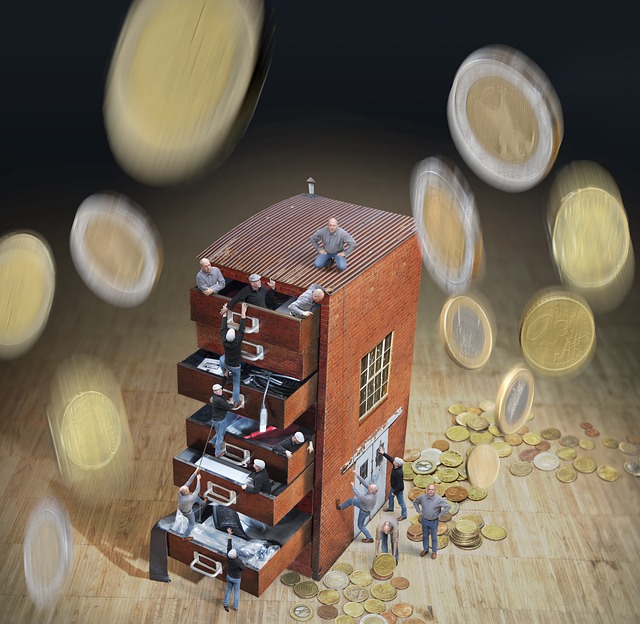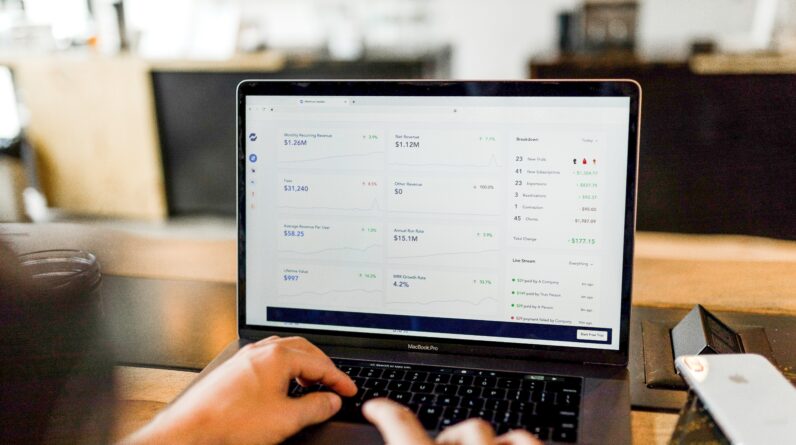
So, you’re interested in learning how to get a money order, huh? Well, you’ve come to the right place! Money orders can be a safe and convenient way to make payments, especially if you don’t have a bank account or prefer not to use cash. In this article, we’ll dive into the details of how to get a money order, where to get one, and the benefits of using one. Sound good? Well, let’s get started then!
First things first, let’s talk about what exactly a money order is. Simply put, it’s a prepaid payment method that can be used to send money to individuals or businesses. Think of it as a check that is already filled out and prepaid. Money orders can be purchased in various denominations, allowing you to send small or large amounts of money depending on your needs.
Now, you may be wondering where you can get a money order. Well, the good news is that they are widely available and can be obtained from a variety of locations such as banks, credit unions, post offices, and even some convenience stores. Each place may have different fees and limitations, so it’s a good idea to do a bit of research beforehand to find the most convenient and affordable option for you. In our upcoming article, we’ll break down the step-by-step process of getting a money order, so you’ll have all the information you need to successfully complete your transaction.
In a nutshell, getting a money order is simple and straightforward. It provides a secure way to make payments when cash or personal checks aren’t feasible. Whether you need to pay rent, send money to a friend, or make a purchase, a money order can be a reliable option. Stay tuned for our engaging article where we’ll guide you through the process of obtaining a money order and provide you with all the essential information you need to know.
Table of Contents
How to Get a Money Order
Are you looking for a safe and reliable way to send money? Look no further than a money order! Money orders are a popular method of payment that provide a secure way to transfer funds to individuals or businesses. In this article, we’ll discuss everything you need to know about money orders, including where to get them, how to fill them out, and the process of cashing and tracking them.
What is a Money Order?
Let’s begin by understanding what exactly a money order is. A money order is a payment instrument that is similar to a check. However, unlike a personal check, a money order is prepaid and guaranteed by the issuing institution. This means that the funds are already paid for and held by the issuer, making it a secure form of payment.
Definition of a Money Order
A money order is a paper document issued by a financial institution, such as a bank or post office, that allows the payer to send a predetermined amount of money to a specified recipient. The recipient can then cash or deposit the money order to receive the funds.
How a Money Order Works
When you purchase a money order, you are essentially buying a prepaid payment instrument. You provide the amount of money you want to send, along with the recipient’s information, and pay the issuer the total amount. The issuer then issues a money order in that amount, which you can then give to the recipient. The recipient can later cash or deposit the money order to receive the funds.
Benefits of Using a Money Order
There are several benefits to using a money order for your financial transactions:
-
Security: Money orders offer a higher level of security compared to personal checks. Since the funds are prepaid, there is no risk of insufficient funds or bounced checks.
-
Wide Acceptance: Money orders are widely accepted by individuals and businesses, making them a convenient form of payment for various purposes, such as rent payments or online purchases.
-
Trackable: Money orders can be easily tracked, ensuring that your payment reaches the intended recipient.
-
No Bank Account Required: Unlike other payment methods like electronic transfers, money orders can be obtained and used by individuals who may not have a bank account.
Now that you understand what a money order is and its benefits, let’s discuss where you can get one.
Where to Get a Money Order
Money orders are available for purchase at various locations, including post offices, banks, grocery stores, and convenience stores. Let’s explore each of these options in more detail.
Post Offices
Post offices are one of the most popular places to get a money order. The United States Postal Service (USPS) offers money orders for purchase at all of its locations. You can simply visit your local post office, provide the necessary information, and pay the required amount to obtain a money order.
Banks
Banks are another reliable source for getting a money order. Most banks offer money orders to their customers, and some may even provide them to non-customers for a fee. To purchase a money order from a bank, you can visit a branch and request one from a teller, ensuring to provide the required information and payment.
Grocery Stores
Many grocery stores also offer money order services. This convenience makes it easy to purchase a money order while running errands or doing your grocery shopping. Simply visit the customer service desk at your local grocery store to inquire about their money order services and purchase one if available.
Convenience Stores
Convenience stores, such as 7-Eleven or CVS, often provide money order services as well. These stores typically have a dedicated section or counter where you can purchase a money order. Just like at the post office or bank, provide the necessary information and payment to obtain a money order.
Now that you know where to get a money order, let’s discuss how to fill one out.

How to Fill Out a Money Order
Filling out a money order is a straightforward process. You will need to provide the recipient’s information, your information as the purchaser, the amount of money, and any necessary memo or note. Let’s break down each step in detail.
Recipient’s Information
Start by filling in the recipient’s information on the designated lines provided on the money order. This includes the recipient’s full name and address. Double-check the accuracy of the recipient’s information to ensure that the funds reach the correct person.
Purchaser’s Information
Next, fill in your information as the purchaser. This typically includes your full name and address. Providing your information helps identify you as the purchaser and enables the recipient to contact you if needed.
Amount of Money
Enter the amount of money you want to send on the line provided. Make sure to write it clearly and legibly to avoid any confusion. Some money orders have a box next to the amount field where you can also write the same amount in numerical form. This is an added precaution to ensure the amount is correctly interpreted.
Memo or Note
The memo or note section is optional but can be useful if you want to provide additional information to the recipient. You can include a brief note regarding the purpose of the payment or any specifics the recipient should be aware of. Keep in mind that the space for the memo or note may vary depending on the money order form.
Once you have filled out all the necessary information on the money order, make sure to keep the detachable receipt or stub for your records. This receipt will help you track the money order and serve as proof of payment.
Paying for a Money Order
To obtain a money order, you will need to pay the issuing institution the total amount for the money order, plus any additional processing fees. Let’s discuss the accepted forms of payment and the options you have.
Accepted Forms of Payment
The most common forms of payment accepted for money orders are cash and debit cards. Some issuers may also accept credit cards or checks, but it’s best to check with the specific location where you plan to purchase the money order. Remember that personal checks may require additional verification, and credit cards may be subject to cash advance fees.
Processing Fees
Issuers generally charge a small fee for the money order service. The fee amount varies depending on the institution and the total value of the money order. When obtaining a money order, inquire about the processing fee to ensure you have enough funds to cover the total cost.
Cash or Debit Card Options
If you’re paying with cash, you can simply provide the exact amount to the cashier at the issuing institution. If you’re using a debit card, present it to the cashier, who will process the payment and provide the money order. Keep in mind that some establishments may have a limit on the maximum amount they can process for a money order.
Now that you have your money order in hand, it’s important to know how to track it.

Tracking a Money Order
Tracking your money order is crucial to ensure it reaches the intended recipient and to have peace of mind knowing its status. Let’s explore the importance of tracking and the different options available to track a money order.
Importance of Tracking
Tracking a money order allows you to verify its delivery and confirm when it has been cashed or deposited. This way, you can ensure the funds are received promptly and take necessary actions if any issues or delays arise.
How to Track a Money Order
To track a money order, you will need the receipt or stub that was provided to you at the time of purchase. The receipt contains a unique identification number that allows you to track the money order’s progress.
Online Tracking Options
Many issuers offer online tracking options that allow you to monitor the status of your money order electronically. By visiting the issuer’s website and entering the identification number, you can access real-time updates regarding the money order’s location and delivery status.
Contacting Customer Service
If you prefer a more direct approach, you can contact the issuer’s customer service department for assistance with tracking your money order. They can provide you with updates and address any concerns or issues you may have. Be sure to have your identification number and other relevant information readily available when contacting customer service.
Now that you’re familiar with tracking a money order, let’s discuss the process of cashing it.
Cashing a Money Order
Cashing a money order is the final step in the money order process. If you’re the recipient, you can choose from various methods to convert the money order into cash. Let’s explore the process in detail.
Endorsing the Money Order
Before you can cash a money order, you must endorse it. This involves signing the back of the money order in the designated endorsement area. The signature should match the name of the recipient on the money order. Endorsing the money order is crucial, as it verifies your identity as the recipient.
Selecting a Cashing Method
There are several methods available to cash a money order. The method you choose will depend on your preferences and the options available in your area. Let’s explore some of the common methods:
Cashing at Your Bank
One of the easiest and most convenient ways to cash a money order is by depositing it into your bank account. Simply visit your bank and deposit the money order just like you would a regular check. Once processed, the funds will become available in your account.
Cashing at Other Locations
If you don’t have a bank account or prefer not to use one, you can cash the money order at various locations. Many grocery stores, convenience stores, and check-cashing outlets offer this service for a fee. They will typically require you to present a valid form of identification, such as a driver’s license or passport, in addition to the endorsed money order.
Remember to compare fees and rates before choosing a location to cash your money order. Some places may charge higher fees or impose lower cashing limits than others.
Now that you know how to cash a money order, let’s explore what to do in case of lost or stolen money orders.

Refunds and Replacement
If a money order is lost, stolen, or damaged, there are processes in place to help you recover your funds. Let’s discuss what to do in such situations and how refunds and replacements work.
Lost or Stolen Money Orders
If you have lost a money order or believe it has been stolen, act quickly to protect your funds. Contact the issuer, provide them with the necessary details, and request a stop payment on the money order if possible. This will prevent anyone from cashing or depositing the money order.
Refund Policies
Each issuing institution may have different refund policies regarding lost, stolen, or damaged money orders. Contact the issuer to understand their specific policies and procedures for obtaining a refund. They will guide you through the necessary steps and provide you with the required forms and documentation.
Reissuing Process
To get a replacement for a lost money order, you will generally need to follow a reissuing process. This involves completing an affidavit or claim form provided by the issuer, providing any supporting documents, and paying a fee for the replacement money order. The reissuing process may take some time, so it’s important to be patient and stay in communication with the issuer throughout the process.
Now that we’ve covered refunds and replacements, let’s discuss some limitations and restrictions associated with money orders.
Limitations and Restrictions
When using money orders, there are several limitations and restrictions you should be aware of. These include maximum amounts allowed, limitations on international money orders, country-specific restrictions, and expiration dates. Let’s explore each of these in detail.
Maximum Amount Allowed
Most issuers have a maximum amount limit for money orders. This limit can vary depending on the issuer and the location where you purchase the money order. It’s essential to check with the issuing institution to ensure your intended amount falls within their limits.
International Money Orders
If you need to send money internationally, it’s important to understand the limitations and restrictions that may apply to international money orders. Not all issuers offer this service, and those that do may have specific regulations and fees for international transactions. Ensure to inquire about international money orders and any additional requirements before making a purchase.
Country-Specific Restrictions
Certain countries may have restrictions or limitations on the use of money orders. Before sending a money order to a specific country, research any regulations or requirements that may be in place. This will help you avoid any potential issues or delays in delivering the funds.
Expiration Dates
Money orders typically have expiration dates printed on them. This means that the recipient must cash or deposit the money order within a specified timeframe, usually within one to three years from the date of issuance. If a money order expires, the funds may no longer be available, and the money order may become void.
Now that you understand the limitations and restrictions associated with money orders, let’s discuss safety and security measures.

Safety and Security
When using money orders, it’s essential to prioritize safety and security to protect yourself and your funds. Let’s explore some key practices to ensure the safety of your money order transactions.
Verifying Security Features
Before purchasing a money order, take a moment to examine it for security features. Legitimate money orders will have various security features, such as watermarks, security threads, or holograms, that make them difficult to replicate. Check for these features to ensure the money order is genuine.
Protecting Your Money Order
Once you have purchased a money order, treat it like cash. Keep it in a safe place, such as a locked drawer or safe, until you are ready to give it to the recipient. Avoid exposing the money order to unnecessary risks, such as loss or theft.
Preventing Fraud
To prevent fraud when using money orders, follow these best practices:
- Only purchase money orders from reputable issuers.
- Double-check the recipient’s information before purchasing the money order.
- Never sign the money order or fill in any information until you’re ready to hand it over to the recipient.
- Resist any requests to send money orders to unknown individuals or addresses.
- Avoid purchasing money orders for anyone you don’t trust or have a legitimate reason to send money to.
By following these safety practices, you can minimize the risk of fraud and ensure the secure transfer of funds.
Conclusion
Money orders are a secure and convenient payment method that provides a reliable way to send funds to individuals or businesses. In this article, we have explored the process of obtaining a money order, filling it out, paying for it, tracking it, cashing it, and understanding refund and replacement processes. We have also discussed limitations and restrictions, as well as safety and security measures to consider.
Whether you need to pay rent, send money to a loved one, or make an online purchase, money orders can be a great option. They offer security, wide acceptance, and ease of use, making them suitable for various financial needs. By following the guidelines provided in this article, you can confidently navigate the money order process and make secure transactions.
Remember to choose a reputable issuer, keep track of your money order, and prioritize safety to protect yourself and your funds. With this knowledge, getting a money order can be a smooth and reliable experience for all your financial needs.










